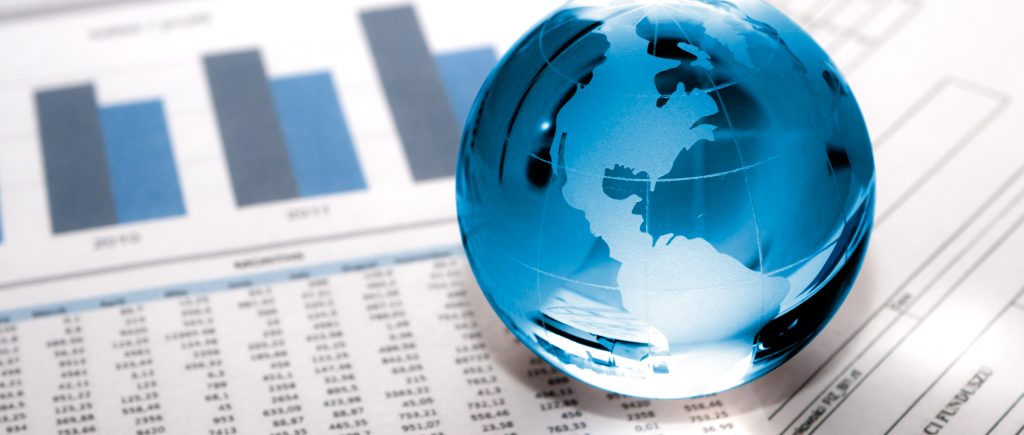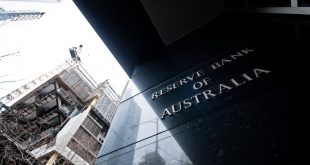It has been a big week for a number of major central banks worldwide. Central banks continuing to raise interest rates in an effort to tame inflation, largely dismissing for now the threat to economic growth posed by the spread of the Omicron variant.
On ‘Super Thursday’ for central banks, Norway hiked rates by 25 bps and the Swiss National Bank maintained its ultra-loose monetary policy. A rate rise announced by Russia’s central bank Friday was its seventh this year.
FOMC Meeting and Market Reaction
On Wednesday, the US Federal Reserve announced its monetary policy decision. The US central bank kept interest rates unchanged at the 0 to 0.25% range with tapering at higher pace, from the USD 15 Billion agreed initially up to USD 30 Billion, in mid-January of 2022.
Moreover, Fed released its SEP report including the “dot-plot”, which displays that policymakers expect three rate hikes by the end of 2022, projecting the FFR at 0.90%.
Federal Reserve rate hikes will cause interest rates to rise on a number of consumer loans, especially mortgage products. Americans wishing to refinance their mortgage or borrowing a home loan, consider acting now to take advantage of low rates before upcoming hikes.
The dollar was bought Sunday night, and all through Monday’s US session, and then in the overnight markets it was bought some more, before turning around and ending in lows. Dollar traders were all uncertain about the FOMC meeting as they believed that Jerome Powell, would make some mention of a rate hike. Just the mention of a rate hike, rejoiced traders, on the other hand, economists focused on “how much of a rate and when it could be enforced.
The US dollar held recent gains in narrow trading on Wednesday as markets awaited a Fed policy statement later in the day to affirm, or upset, expectations for interest rate hikes in the new year, so the dollar index =USD, was up 0.04% at midmorning in New York after trading through the day within 0.2% of its Tuesday close.
On Friday, the US Dollar Index rose by 0.72%, sitting at 96.68 during the us trading session as the market sentiment was downbeat because major US stocks finished in the red territory, following the footsteps of the European stocks.
Bank of England
In an exceptionally tricky time to do so, the BoE jumped with its second surprise in as many months. In November the central bank failed to raise interest rates after it had steered markets to expect an increase.
On 16 December, it did raise rates after all, surprising investors. The bank’s monetary-policy committee voted by a margin of eight to one to raise interest rates from 0.1% to 0.25%. The BoE lifted its key rate by 25 basis points, pushing British gilt yields sharply higher.
That makes Britain the first big rich economy to experience interest-rate rises since the pandemic struck.
There were indications that UK labour market is making a rapid recovery. The latest data show that it has shrugged off the end of the country’s furlough scheme with little fuss and unemployment improved more quickly than expected.
As for markets’ reaction, on Friday, since losing its grip on the 1.3300 level, GBP/USD has continued to gradually ebb lower and, trading in the 1.3270s, is now all the way back to its pre-BoE policy announcement levels. The bank surprised markets with a 15bps rate hike on Thursday, sending GBP to highs. Markets had expected the bank to hold off on rate hikes until February of next year given dovish language from BoE members earlier in December.
The GBP/USD pair is now refreshing intraday low to 1.3233 during the early Asian session on Monday. Recently elevated concerns over the coronavirus spread in the UK and Brexit updates could be held responsible for the cable pair traders’ disappointments despite the Bank of England’s rate hike.
European Central Bank and Reaction
The European Central Bank further cut its bond purchases on Thursday but vowed to continue its unprecedented monetary policy stimulus to support the Eurozone economy into 2022.
A rate hike by the Bank of England caught bond markets by surprise on Thursday, pushing up yields across the Eurozone just before the European Central Bank was expected to dial back stimulus but pledge to keep borrowing costs low.
Eurozone yields were up too. Germany’s 10-year bond yield was last up 3 bps at -0.37%, while Italian yields rose 2 bps to 0.94%. British yields were 7-8 bps higher on the day.
ECB hawks warn against adding to APP when inflation could remain too high longer-term. Doves want to stick with ultra-easy policy because long-term price pressures remain weak.
“Markets were worried that we could get a hawkish meeting. ECB chief Christine Lagarde is trying to bring a consensus between a clearly divided council.
News that Germany plans to issue 422 billion Euros of bonds in 2022, the second highest on record, had no immediate impact.
The ECB left its benchmark refinancing rate unchanged at 0%, while the rate on its marginal lending facility remained at 0.25% and the rate on its deposit facility was kept at -0.5%, in line with expectations.
The Euro initially reacted positively to the ECB meeting. The central bank left interests rate unchanged and reduced its bond purchases, mostly in line with expectations.
The ECB has entered into a very cautious tapering process. The details of the taper were less clear-cut than we had expected. The ECB did not announce a third transitional asset purchase programme.
Stock Markets
On Friday, US stock traders were digesting Fed’s decisions after the positive reaction, which led to the decline of most New York Stock Exchange indices.
The Dow Jones Industrial Average fell to 35578 points, after adding about 327 points, or 1.00%. S&P500 fell to 4,649 points, losing about 19 points, or 0.4%.
Nasdaq, on the other hand, rose to 15,216 points, adding about 39 points, or 0.3%.
Investors were likely to realize the risk imposed by Fed’s decisions announced last Wednesday as they were to push US borrowing costs higher, which is harmful to the trading environment.
Debt Ceiling
The Senate passed legislation Tuesday to raise the nation’s debt limit by USD 2.5 trillion, one of the final steps Congress needs to take to stave off default and the economic peril that would come if the US were unable to pay its bills.
The bill, approved in a 50-49 vote, now heads to the House of Representatives for final passage before it can head to President Joe Biden’s desk for a signature.
Treasury Secretary Janet Yellen told lawmakers she estimated the United States would reach its debt ceiling by Wednesday.
Treasury Yields
In the US bond market, Treasury yields in the short-maturity of the curve rise with 2s, and 5s, up between 1 and 2.5 basis points, ended at 0.6457% and 1.1815%, each.
In the mid to long maturity of the yield curve, yields fell, Friday, between 1-4 basis points, with 10s, the 20s, and 30s, finishing at 1.412%, 1,8623%, and 1.82%, respectively.
Gold
Gold and Silver both gained on Monday, but the precious metals got sold on Tuesday. Following FOMC meeting, Gold futures rallied on Thursday as the US dollar slipped, helping lift prices to their highest finish in more than three weeks, a day after the Federal Reserve’s policy update.
The rise for gold came despite the Fed announcing plans to more aggressively slow its bond purchases and projecting three interest-rake hikes next year.
Cryptocurrencies
Bitcoin fell on Friday, for the second successive day, putting the largest cryptocurrency on pace for a fifth consecutive weekly decline, joining other risk assets under pressure with central banks taking a more aggressive tone on inflation.
Leading cryptocurrency by market capitalization Bitcoin has experienced another volatile week as BTC prices moved sideways while awaiting the outcome of the latest US Federal Reserve meeting.
Despite repeatedly trying to retake the USD 50,000 level, the BTC-USD pair has continued trending between USD 46,000 and USD 50,000 amid monetary policy uncertainty. Prices quickly bounced to USD 49,000 after the Fed rolled out a new policy roadmap for 2022 that includes multiple rate hikes and a more rapid drawdown of stimulus measures.
Oil
The number of active drilling rigs in the United States this week rose by 3, according to Baker Hughes.
The total rig count rose to 579—a figure that is 233 up from this time last year. Active rigs were still hundreds less than the 790 active rigs drilling prior to the pandemic.
The US oil rig count rose by 4 to 475 while gas rigs fell by 1 to 104. Miscellaneous rigs held at zero.
The EIA’s estimate for oil production in the United States for the week ending December 10, the last week for which there is data, held at 11.7 million bpd.
Oil production is still more than a million bpd less than pre-pandemic levels, although oil production has been steadily increasing since Hurricane Ida struck the last week of August. Drilling rigs have been slowly but steadily increasing for longer–since the previous September, although production often lags these rig increases.
Canada’s overall rig count decreased by 10. Active oil and gas rigs in Canada were at 167, up 65 on the year.
Oil market watchers are torn between dramatically different forecasts for crude prices, even after OPEC’s upbeat forecast for crude demand in 2022.
OPEC’s outlook sees the world consuming 99.13 million barrels per day of crude in the first quarter of 2022, an increase of 1.1 million barrels per day from its last forecast a month ago, showing a more relaxed outlook on Covid-19 risks.
International benchmark Brent crude is trading in the low $70 range, around $73.54 a barrel at 10:00 a.m. ET on Tuesday, down just over 1%, with WTI was trading at $70.53 a barrel at the same time, also down just over 1%.
On Thursday, US WTI and Brent crude oil futures were trading higher, but off their highs on Thursday after the markets ran into technical resistance.
Oil prices fell early on Friday and were on track for a weekly loss as the fast-spreading Omicron COVID variant increased concerns about a potential hit to oil demand, while the hawkish Fed stance of tightening monetary policy next year started to lead to anxiety about economic growth.
On Friday, WTI Crude was down 1.87% at $71.10 and Brent Crude prices had fallen by 1.75% to $73.71.
Oil prices were up on Wednesday and Thursday, following a bullish inventory report from the Energy Information Administration (EIA) showing falling US crude and oil product inventories and a record petroleum demand in America for the week to December 10.
Chinese Economy
Debt problems at a major Chinese property developer have now spilled over into a vital artery of the nation’s industrial engine – the steel sector – and started to ripple through to other critical parts of the world’s second-largest economy.
Already, steel prices were down from their record highs seen earlier this year due to easing demand from construction activities, which account for over half of the metal’s consumption, while steelmakers’ share prices have also been hurt.
Share prices of major Chinese listed firms dropped from high levels in recent months on easing demand and lower raw materials prices.
Growth in China’s property investment and new construction starts measured by floor area fell in recent months amid developers’ default crisis and government’s controls.
The slowdown in the real estate sector has dented China’s monthly crude steel output by more than 20% since September.
 Noor Trends News, Technical Analysis, Educational Tools and Recommendations
Noor Trends News, Technical Analysis, Educational Tools and Recommendations





